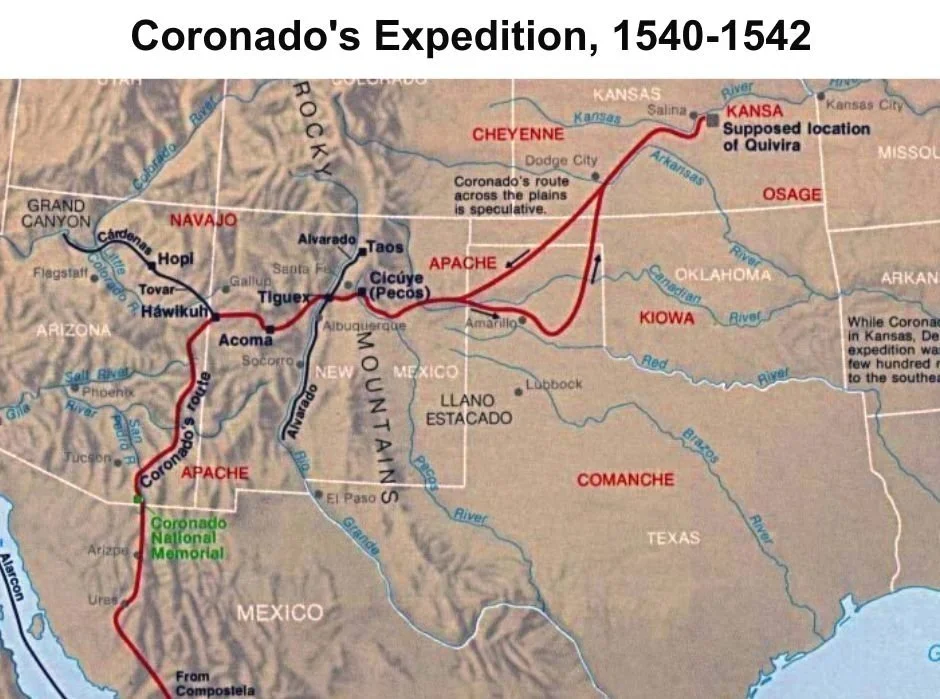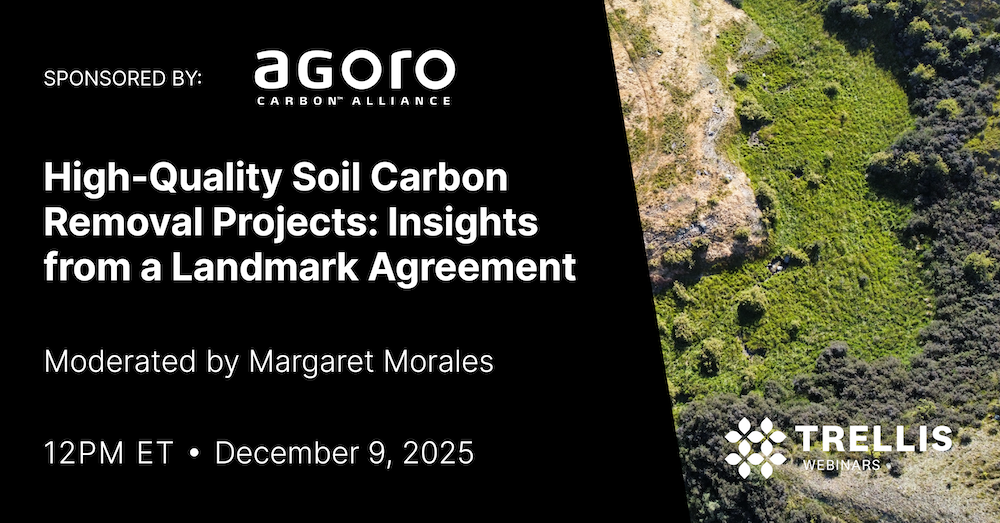The Return of Rape, Ruin and Run to the National Forests – Counterpunch

Report on the Proposed Reversal of the Roadless Area Conservation Rule and its Implications for Sustainable Development Goals
Introduction
This report analyzes the proposed policy change by the Trump Administration to permit road construction and logging across 58 million acres of previously protected roadless public lands. The analysis is framed within the context of the United Nations Sustainable Development Goals (SDGs), highlighting the significant contradictions between the proposed actions and the global agenda for sustainability.
Historical Context and Alignment with Sustainable Development Principles
The Roadless Area Conservation Rule
The Roadless Area Conservation Rule, established in the late 1990s, was the culmination of decades of evolving forest management policy. This policy shift reflected a growing public and legislative awareness of the multifaceted value of forest ecosystems beyond timber extraction, a principle that aligns directly with the integrated nature of the SDGs. The rule was informed by key environmental legislation, including:
- The National Forest Management Act
- The National Environmental Policy Act
- The Clean Water Act
- The Endangered Species Act
- The Wilderness Act
These legislative milestones established a framework for managing public lands that prioritizes long-term ecological health and multiple uses, prefiguring the core tenets of several SDGs, particularly SDG 15 (Life on Land) and SDG 6 (Clean Water and Sanitation).
Economic and Ecological Rationale for Protection
The 58 million acres protected under the rule remained undeveloped primarily due to economic and ecological factors. These areas were often remote, with challenging terrain and soil types not conducive to commercial timber production. This reality underscores the conflict with SDG 12 (Responsible Consumption and Production), as exploiting these marginal lands would likely require significant public subsidies for road construction, representing an inefficient use of natural and financial resources.
Conflict Analysis: Proposed Policy vs. Sustainable Development Goals
SDG 15: Life on Land
The proposal to open roadless areas to development poses a direct threat to the achievement of SDG 15, which aims to protect, restore, and promote the sustainable use of terrestrial ecosystems.
- Threat to Biodiversity (Target 15.5): These roadless areas serve as critical refuges for wildlife and contain high levels of biodiversity. Road construction and logging would lead to habitat fragmentation and destruction, jeopardizing numerous species.
- Unsustainable Forest Management (Target 15.2): The policy promotes resource extraction over sustainable management. Many of these forests, particularly in arid regions like Idaho, have slow regeneration rates. Logging would constitute a one-time extraction event, not a “sustained yield,” thereby undermining the long-term health and productivity of the forest ecosystem.
- Land Degradation (Target 15.3): Building roads in sensitive geological areas, such as the granitic soils of the Idaho Batholith, has historically led to severe soil erosion and land degradation, directly contravening the goal to combat desertification and reverse land degradation.
SDG 6: Clean Water and Sanitation
The integrity of water resources is intrinsically linked to the health of forest watersheds. The proposed policy threatens SDG 6, specifically Target 6.6, which calls for the protection and restoration of water-related ecosystems.
- Watershed Degradation: The historical case of the South Fork of the Salmon River demonstrates the severe impact of logging and road building. Sediment runoff from fractured soils buried salmon spawning beds, devastating a critical fishery and ecosystem. Replicating these practices would degrade water quality and disrupt freshwater ecosystems across the West.
SDG 13: Climate Action
The administration’s justification of “thinning” for fire prevention is counter to established forest science and undermines climate resilience efforts central to SDG 13.
- Increased Fire Risk: Intact, mature forest canopies maintain cooler, moister microclimates that are more resilient to fire. Logging and opening the canopy to sun and wind can dry out the forest floor, increasing fire susceptibility.
- Loss of Carbon Sinks: These large, intact forests act as significant carbon sinks. Their destruction would release stored carbon and eliminate their future capacity for carbon sequestration, hindering climate mitigation efforts.
SDG 8 & SDG 12: Decent Work and Economic Growth & Responsible Production
The economic model proposed is extractive and unsustainable, conflicting with the principles of sustainable economic growth and responsible resource management.
- Unsustainable Economic Model (Target 8.4): The policy promotes a “rape, ruin, and run” model of resource extraction that is dependent on public subsidies. This fails to decouple economic activity from environmental degradation and is not a viable long-term economic strategy.
- Inefficient Resource Use (Target 12.2): The plan ignores the immense non-timber value of these lands, including recreation, tourism, and ecosystem services like water purification. Focusing solely on subsidized timber extraction represents a failure to achieve the sustainable management and efficient use of natural resources.
SDG 11 & SDG 16: Sustainable Communities & Strong Institutions
The policy disregards the cultural and recreational value of these lands to local communities and undermines the established, participatory governance frameworks for public lands.
- Threat to Cultural and Natural Heritage (Target 11.4): For many communities in the West, wild lands are integral to their cultural identity, recreation (hunting, fishing), and local economies. Destroying these areas degrades the natural heritage that sustains these communities.
- Erosion of Institutional Integrity (Target 16.6 & 16.7): Overturning the roadless rule dismisses decades of scientific learning, public input, and legal precedent. It represents a move away from the responsive, inclusive, and transparent decision-making required for strong and accountable institutions.
Conclusion
The proposed reversal of the Roadless Area Conservation Rule is fundamentally incompatible with the United States’ implicit commitment to the Sustainable Development Goals. The policy prioritizes short-term, subsidized resource extraction at the expense of long-term ecological integrity, water security, climate resilience, and community well-being. Upholding the protections for these 58 million acres is essential for maintaining biodiversity, protecting critical watersheds, and ensuring that public land management aligns with the global imperatives of sustainable development.
Analysis of Sustainable Development Goals in the Article
1. Which SDGs are addressed or connected to the issues highlighted in the article?
The article discusses issues of forest management, resource extraction, environmental protection, and governance, which directly connect to several Sustainable Development Goals. The primary focus is on the protection of terrestrial ecosystems, but this has cascading effects on water, climate, and institutional integrity.
- SDG 15: Life on Land: This is the most central SDG, as the article’s main topic is the protection of 58 million acres of roadless forest lands from logging and road construction. It explicitly discusses forest management, biodiversity (wildlife), and the degradation of land.
- SDG 6: Clean Water and Sanitation: The article directly links forest management practices to water quality. It provides a specific example of how road construction and logging led to soil erosion, which polluted a river and destroyed fish habitats.
- SDG 13: Climate Action: The article connects forest health to climate change, noting that climate change makes forest regeneration more difficult and that intact forests are more resilient to fire, a climate-related hazard.
- SDG 12: Responsible Consumption and Production: The article critiques the proposed plan as an unsustainable model of resource extraction (“rape, ruin and run”) and contrasts it with sustainable practices like managing for “sustained yield.” It also highlights the inefficient use of resources through subsidized logging.
- SDG 16: Peace, Justice and Strong Institutions: The article discusses the role of environmental laws and government rules (the “roadless rule”) in protecting natural resources. It critiques the administration’s attempt to overturn established, science-based policy, touching on themes of institutional accountability and responsive governance.
2. What specific targets under those SDGs can be identified based on the article’s content?
Based on the issues raised, several specific SDG targets can be identified:
- SDG 15: Life on Land
- Target 15.1: Ensure the conservation and sustainable use of terrestrial and inland freshwater ecosystems, particularly forests. The entire article is a plea to conserve the “58 million acres of roadless public lands” and argues against developing them.
- Target 15.2: Promote the implementation of sustainable management of all types of forests and halt deforestation. The article contrasts the “truly common sense decision” to prohibit logging with the new plan to “cut down a lot of trees,” directly addressing the need to halt deforestation in these specific areas and promote sustainable management.
- Target 15.5: Take urgent action to reduce the degradation of natural habitats and halt the loss of biodiversity. The article warns that the proposed actions will be “wreaking havoc on the land’s other resources, like water and wildlife” and mentions the near destruction of “one of the most important salmon runs,” which is a direct reference to habitat degradation and biodiversity loss.
- SDG 6: Clean Water and Sanitation
- Target 6.6: Protect and restore water-related ecosystems, including mountains and forests. The article provides a clear example of this need with the story of the South Fork of the Salmon River, where logging and roads “washed all those soils…down into the river, burying the salmon spawning beds in layers of sediment.” Protecting the forests is presented as essential for protecting the river ecosystem.
- SDG 13: Climate Action
- Target 13.1: Strengthen resilience and adaptive capacity to climate-related hazards. The article discusses forest fires, arguing that “intact forest canopies are more successful at preventing fires than logged over areas,” thus highlighting the role of conservation in building resilience to this hazard.
- Target 13.2: Integrate climate change measures into national policies, strategies and planning. The article criticizes the administration’s plan for ignoring the fact that forest regeneration is “far less likely to occur now in the time of climate change warming,” implying a failure to integrate climate considerations into resource management policy.
- SDG 12: Responsible Consumption and Production
- Target 12.2: Achieve the sustainable management and efficient use of natural resources. The article heavily criticizes the proposed logging as unsustainable “resource extraction” and contrasts it with the principle of “sustained yield.” It also points to the inefficiency of the practice, noting that “timber companies wouldn’t have been able to make a buck” without public subsidies for road construction.
- SDG 16: Peace, Justice and Strong Institutions
- Target 16.7: Ensure responsive, inclusive, participatory and representative decision-making. The article implies that the administration is ignoring the will of local populations, stating, “The good people of Idaho don’t want their wild areas desecrated.” It also notes that the original “roadless rule” grew out of a long public process involving new laws, lawsuits, and changing public values, which the new policy disregards.
3. Are there any indicators mentioned or implied in the article that can be used to measure progress towards the identified targets?
The article mentions or implies several quantitative and qualitative indicators that could be used to measure progress:
- Acreage of protected forest land: The most direct indicator mentioned is the “58 million acres of roadless public lands.” The change in this acreage over time would be a primary indicator for Target 15.1.
- Annual timber harvest levels: The article refers to the “annual timber harvest on many national forests,” suggesting this is a key metric. Comparing this volume to calculated “sustained yield” levels would be an indicator for Targets 15.2 and 12.2.
- Amount of public subsidies for logging: The article describes the “Forest Service practice of subsidizing the timber industry by paying for the construction of the roads.” The monetary value of these subsidies is a measurable indicator of inefficient resource use under Target 12.2.
- Health of fish populations: The article’s reference to “nearly wiping out one of the most important salmon runs” implies that the population size and health of keystone species like salmon serve as a biological indicator for the health of water ecosystems (Target 6.6).
- Rate of forest regeneration: The article mentions that on some lands, it would “take several human lifetimes to grow them back, if you could achieve forest regeneration in the first place.” The success rate of reforestation efforts is an implied indicator for sustainable forest management (Target 15.2) and climate resilience (Target 13.2).
- Existence and enforcement of environmental regulations: The status of the “roadless rule” itself is an indicator of institutional commitment to environmental protection (Target 16.7). Its repeal or weakening would indicate a negative trend.
4. Table of SDGs, Targets, and Indicators
| SDGs | Targets | Indicators Identified in the Article |
|---|---|---|
| SDG 15: Life on Land |
15.1: Conserve terrestrial and inland freshwater ecosystems.
15.2: Promote sustainable forest management and halt deforestation. 15.5: Reduce degradation of natural habitats and halt biodiversity loss. |
– Acreage of protected roadless areas (mentions “58 million acres”). – Annual timber harvest levels. – Rate of successful forest regeneration after logging. – Impact on wildlife and specific species (e.g., salmon). |
| SDG 6: Clean Water and Sanitation | 6.6: Protect and restore water-related ecosystems. |
– Health and population size of salmon runs. – Sediment levels in rivers resulting from soil erosion (implied by “burying the salmon spawning beds in layers of sediment”). |
| SDG 13: Climate Action |
13.1: Strengthen resilience to climate-related hazards.
13.2: Integrate climate change measures into national policies. |
– Resilience of forests to fire (compares intact vs. logged areas). – Integration of climate change impacts (e.g., on regeneration) into forest management plans. |
| SDG 12: Responsible Consumption and Production | 12.2: Achieve sustainable management and efficient use of natural resources. |
– Volume of timber harvested relative to “sustained yield.” – Amount of public financial subsidies for road building and logging operations. |
| SDG 16: Peace, Justice and Strong Institutions | 16.7: Ensure responsive, inclusive, and representative decision-making. |
– Existence and enforcement of protective regulations like the “roadless rule.” – Degree to which policy reflects the values of local populations (e.g., “The good people of Idaho don’t want their wild areas desecrated”). |
Source: counterpunch.org

What is Your Reaction?
 Like
0
Like
0
 Dislike
0
Dislike
0
 Love
0
Love
0
 Funny
0
Funny
0
 Angry
0
Angry
0
 Sad
0
Sad
0
 Wow
0
Wow
0














































































